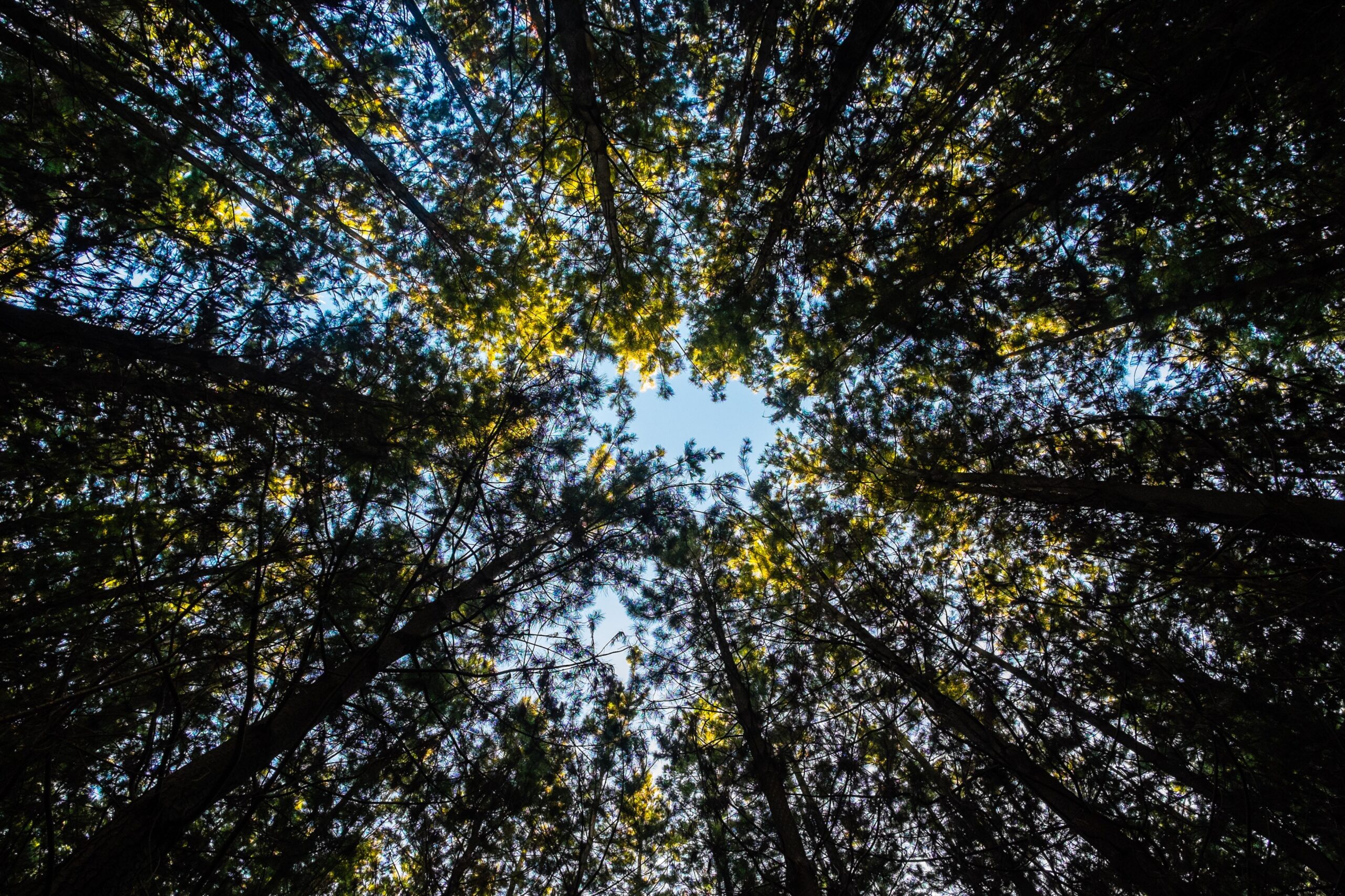By Wolf Ridge Naturalist
sunny, calm, °15 F

The recent warmth of February has left the snow waterlogged and crunchy.
My snowshoes are necessary for the trek to the mandala, but they’re much too loud for my liking. Five minutes of slipping and sliding through the dense snow bring me to my sit-spot in the forest. Something in my demeanor changes as I sit down in the snow (the rock has long been buried). I breathe easier, tension lifts from my mind, and everything seems to glow more vibrantly.
It’s funny how a drop in elevation of three feet can change my perspective so much. The trees have always towered over me whether I am standing or not, but somehow rooting myself to the ground, mimicking to the best of my ability the state of a tree, brings me closer to them. Though I’ll only be here an hour, through listening, feeling, and watching, I begin to understand the trees in ways that I could not as a passing hiker.
It’s in the little things, like hearing the wood at the base of the tree creak and crack as the tips of the branches catch the morning’s first winds. I can feel it, like crawling out of my tent on a cool morning and stretching my chilly limbs. It’s in noticing and naming the neighbors of the tree, the red squirrel, chickadee, goldfinch, nuthatch, raven, blue jay, maple, balsam fir, and paper birch, who are all present this morning. I recognize them as meaningful to the life of the tree, even if I don’t understand how.
Trees must be one of the grandest life forms on Earth.
There are over three trillion trees on this planet; that is four hundred for every one human. They thrive, not just survive, in sun-baked deserts and the icy temps of northern climates. The oldest living tree is about 4,000 years old and this planet is home to 60,000 tree species. We tell ourselves a story of how humans have conquered the globe, but trees have bested us in two of our traditional categories of success: population and lifespan. We can learn quite a lot from what they have to share. It is nice to be in their presence this morning.

I had a few extra minutes after breakfast this morning and read a chapter out of David Haskell’s The Forest Unseen: A Year’s Watch in Nature. I had one of those moments where a writer perfectly captures a thought that you were never able to put into words yourself: The idea that consciousness is a human-only gift has no empirical basis: it is an assumption.
As I sit with the trees, I do my best to know them as fellow members of life in this world.
I’ve come a long way since I was a child. At the age of four, I distinctly remember my dad telling me that trees were alive, to which I naturally responded “No they’re not! They don’t have blood, or a heart, so how can they be alive?” My father, bless him, didn’t have the botanical knowledge to spell out what exactly makes a tree alive, but he got the point across. At that moment, for me, trees changed from being dead to alive. Now, twenty years later, I find myself wondering if trees can change from being simply alive to having dignity, worth, and even consciousness.
This series is inspired by David G. Haskell’s The Forest Unseen. Haskell visits a one-square meter patch of forest (the mandala) almost daily for a whole year to tell the story of the forest changing through the seasons. Haskell uses the term mandala, referencing the Buddhist geometric figure symbolizing the universe, to refer to the small forest patch he watches. I’ll be visiting the same spot in the forest a few times a week and periodically writing about the experience, connecting the stories I see unfolding to larger themes of biology.

